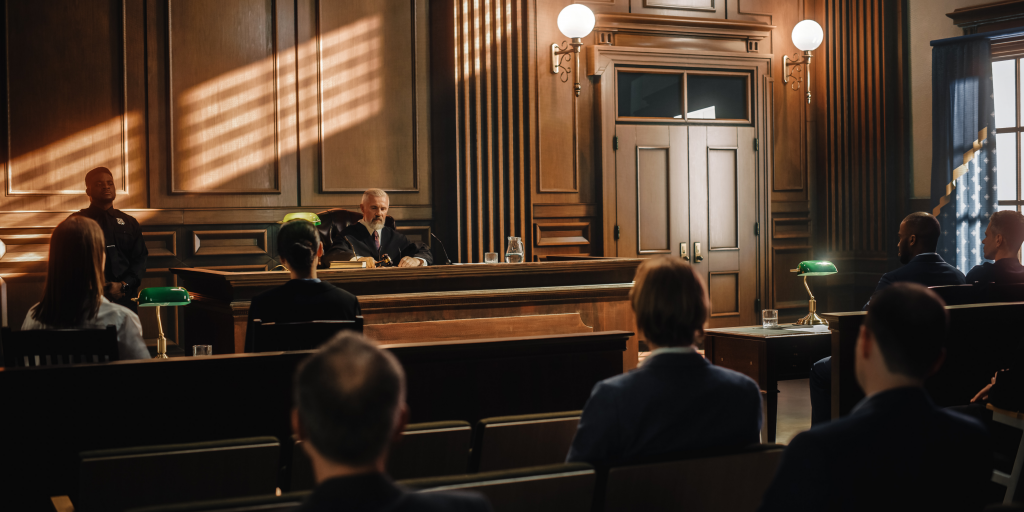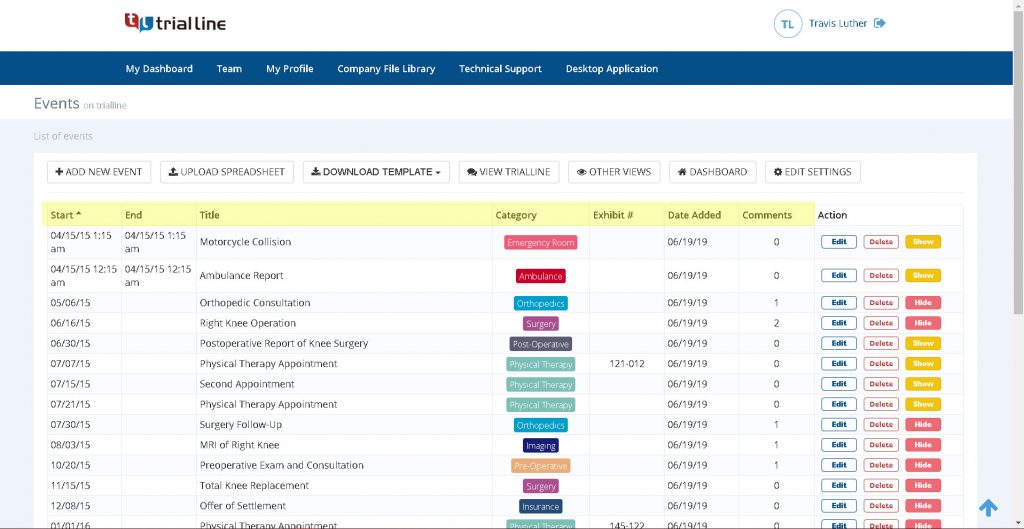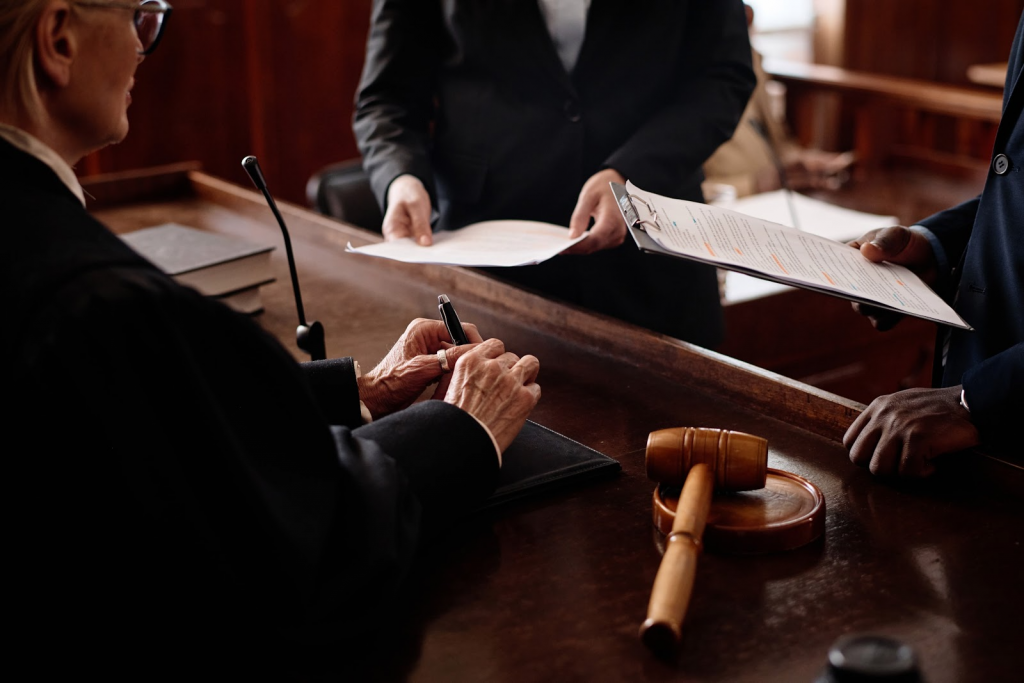Felony cases follow a legal process that determines how charges move through the court system. Unlike misdemeanor cases, felony cases involve serious crimes that can lead to long-term consequences, including prison sentences, fines, and a permanent criminal record.
The timeline for a felony case depends on several factors, including the severity of the crime, legal motions, and plea negotiations.
Understanding each phase helps defendants, victims, and attorneys prepare for what’s ahead. Knowing how long each stage typically takes can also reduce confusion and stress during the legal process.
In this article, you will learn how long the process typically takes, what to expect at each step, and how to manage the case.
Make courtroom presentations clearer with detailed felony case timelines. Try TrialLine now!
What Is a Felony Case?
A felony is a serious crime that carries harsher penalties than a misdemeanor. Courts classify crimes based on their severity, with felonies leading to longer prison sentences, higher fines, and long-term legal consequences.
The main difference between felonies and misdemeanors is the punishment. Misdemeanors typically result in less than a year in jail, smaller fines, and lower court supervision requirements.
Felonies, on the other hand, can lead to multi-year prison sentences and larger fines. Some felony convictions result in life imprisonment or, in certain jurisdictions, the death penalty.
Felonies cover a wide range of crimes, but they generally fall into the following categories:
- Violent crimes – Murder, manslaughter, aggravated assault, robbery, and kidnapping.
- Drug offenses – Drug trafficking and large-scale possession.
- White-collar crimes – Fraud, embezzlement, money laundering, insider trading, and identity theft.
- Property crimes – Burglary, arson, grand theft, and motor vehicle theft.
- Sex crimes – Sexual assault, rape, child exploitation, and sex trafficking.
Criminal Process for Felony Cases
Felony trials move through several criminal case stages, each designed to ensure that the legal process is fair and follows due process:
1. The Crime and Investigation
The felony criminal case process begins when a crime occurs and law enforcement starts an investigation. Police officers, detectives, or federal agencies gather evidence, interview witnesses, and attempt to identify suspects.
When law enforcement receives a report of a crime, officers assess the scene, document evidence, and take witness statements. If there is immediate probable cause, an arrest may happen quickly.
In more complex cases, such as fraud or homicide, investigators spend weeks or months building a case before making an arrest.
Common investigative steps include:
- Collecting physical evidence – DNA, fingerprints, weapons, surveillance footage, or forensic materials.
- Interviewing witnesses and victims – Statements help establish a timeline and identify potential suspects.
- Conducting searches – Law enforcement may obtain warrants to search homes, vehicles, or digital records.
- Surveillance and undercover operations – Used in drug cases, organized crime investigations, and fraud cases.
2. Arrest
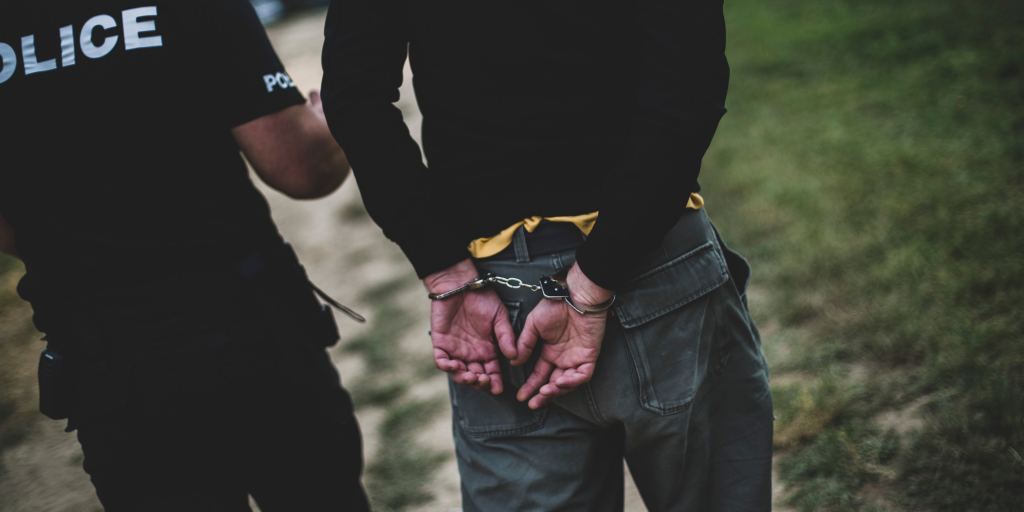
When law enforcement has sufficient evidence to support probable cause, they proceed with an arrest. This can happen in different ways, depending on the circumstances of the crime and whether officers witnessed it directly.
If officers see a felony occurring, they can arrest the suspect immediately without a warrant.
However, if the crime is discovered after it happens or requires further investigation, police typically obtain an arrest warrant from a judge. This warrant authorizes law enforcement to take the suspect into custody.
The arrest process includes:
- Taking the suspect into custody – Officers inform the suspect that they are under arrest and read them their Miranda rights, including the right to remain silent and the right to an attorney.
- Transporting to the police station – The suspect is taken to a law enforcement facility for processing.
- Booking procedure – Officers record the suspect’s personal details, take fingerprints and a mugshot, and enter the information into a law enforcement database.
3. Initial Court Appearance
The initial court appearance is the defendant’s first hearing after an arrest. This step makes sure the accused understands the charges and their legal rights. It usually happens within 24 to 48 hours of the arrest, though weekends and holidays can extend this timeframe.
During this hearing, the judge reads the formal charges and explains the defendant’s rights, including the right to an attorney and the right to remain silent. If the defendant cannot afford a lawyer, the district court appoints a public defender.
The judge also decides whether the defendant will remain in jail or be released on bail. Bail is a financial guarantee that the defendant will return for future hearings.
The judge considers several factors when setting bail, including:
- The seriousness of the criminal charges
- The defendant’s criminal history
- The risk of the defendant fleeing before trial
- Whether the defendant poses a threat to the public
4. Preliminary Hearing or Grand Jury Indictment
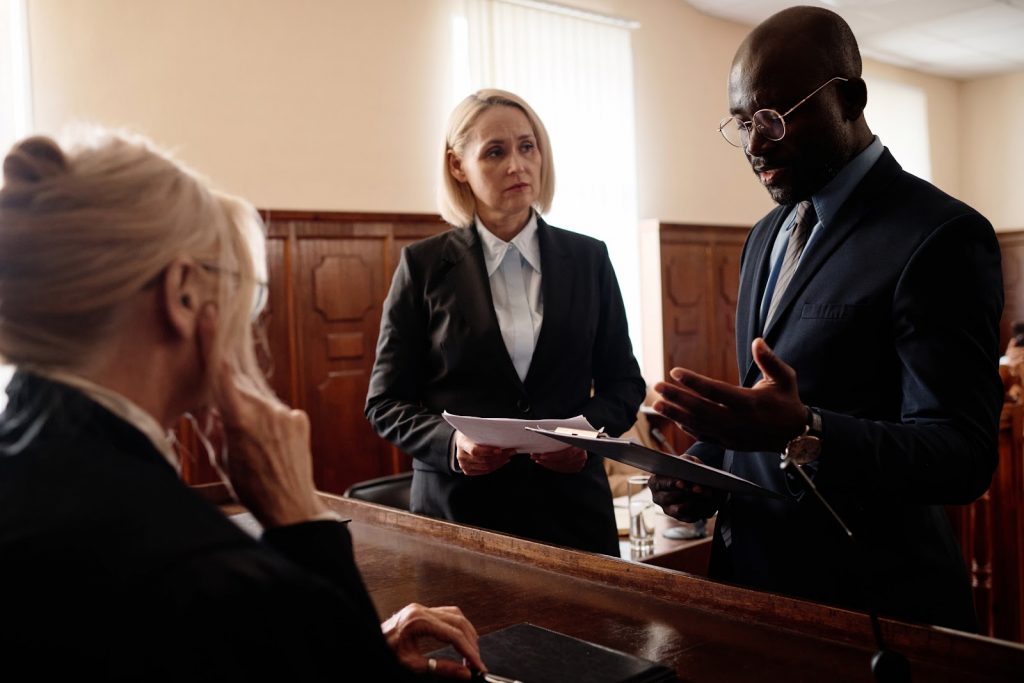
In a preliminary hearing, the judge reviews the evidence and hears testimony from witnesses. The prosecution must show probable cause and enough evidence to suggest that a crime was committed and the defendant was involved.
The defense can challenge the evidence and question witnesses, but this is not a full trial. If the judge decides there is probable cause, the case moves forward. If not, the judge may dismiss the charges.
In some states and for federal cases, prosecutors use a grand jury indictment instead of a preliminary hearing. A grand jury is a group of citizens who review the evidence presented by the prosecution.
Unlike a regular trial, grand jury proceedings are private, and the defense is not present. If the grand jury finds sufficient evidence, they issue an indictment, which formally charges the defendant. If they do not, the case may be dropped.
5. Arraignment
At the arraignment, the defendant appears in court to enter a formal plea in response to the charges.
The judge reads the official charges, and the defendant chooses one of three pleas:
- Not guilty – The case proceeds to pre-trial motions and possibly trial.
- Guilty – The defendant pleads guilty to the charges, and the case moves directly to sentencing.
- No contest – The defendant does not admit guilt but accepts the punishment as if they were guilty.
If a criminal defendant accepts a plea bargain offered by the prosecution, they may enter a guilty plea in exchange for reduced charges or a lighter sentence. This agreement can shorten the legal process and avoid a full trial.
However, the judge must approve the plea deal before it becomes final.
For those who plead not guilty, the case moves forward to the pre-trial motions phase, where attorneys argue legal points that could impact the trial.
6. Pre-Trial Phase
The pre-trial phase sets the foundation for the case. It involves pre-trial motions, discovery, and legal arguments that shape the direction of the case before it reaches trial.
Pre-Trial Motions
After the arraignment, both the prosecution and defense file pre-trial motions.
These legal requests help shape the trial by determining what evidence can be used, whether the case should continue, or if certain legal issues need to be resolved before trial.
Common pre-trial motions include:
- Motion to dismiss – The defense argues that the case should be dropped due to lack of evidence, legal errors, or constitutional violations. If the judge grants this motion, the case ends.
- Motion to suppress evidence – If law enforcement gathered evidence illegally, such as through an improper search or violation of rights, the defense can request that the court exclude that evidence from trial.
- Motion for change of venue – If a case receives widespread media attention, the defense or prosecution may request a trial in a different location to ensure a fair jury.
- Motion to compel discovery – If one side refuses to share evidence, the opposing side can request a court order to obtain it.
- Motion for continuance – Either party can request more time to prepare for trial due to new evidence, witness availability, or other legal reasons.
Discovery Process
The discovery process ensures transparency and prevents surprises during the trial. Prosecutors and defense attorneys exchange evidence to build their cases.
Courts require the disclosure of key evidence, including:
- Police reports – Official records of the investigation, including witness statements and forensic findings.
- Physical evidence – Weapons, DNA samples, fingerprints, or other items connected to the crime.
- Witness testimony – Statements from eyewitnesses, experts, and victims.
- Digital evidence – Surveillance footage, phone records, and emails related to the case.
7. Criminal Trial Phase
If no plea deal is reached, the case goes to trial. Felony trials can be either a jury trial, where a group of 12 citizens decides the verdict, or a bench trial, where the judge alone makes the decision. The prosecution must prove guilt beyond a reasonable doubt.
The trial phase consists of:
Jury Selection
In a jury trial, attorneys and the judge select a panel of 12 jurors to decide the case. The goal is to choose fair and impartial individuals.
Both the prosecution and defense question potential jurors to assess biases, knowledge of the case, and personal opinions that could affect their judgment. Attorneys can remove jurors using:
- Challenges for cause – Dismissing jurors who show clear bias or an inability to be impartial.
- Peremptory challenges – Removing a limited number of jurors without stating a reason, as long as it is not discriminatory.
Opening Statements
Once the jury is selected, both sides present their opening statements. This is each attorney’s opportunity to outline their case and set expectations for the trial.
- Prosecution’s opening statement – The prosecutor explains the charges, summarizes the evidence, and argues why the defendant is found guilty.
- Defense’s opening statement – The defense counters by highlighting weaknesses in the prosecution’s case, presenting an alternative explanation, or arguing that the evidence does not prove guilt beyond a reasonable doubt.
Presentation of Evidence
The prosecution must prove the defendant’s guilt beyond a reasonable doubt by presenting evidence. Both sides introduce different types of evidence, including:
- Testimonial evidence – Witnesses, including police officers, experts, or eyewitnesses, provide testimony.
- Documentary evidence – Written records, emails, contracts, or photographs relevant to the case.
- Physical evidence – Objects like weapons, fingerprints, or DNA samples directly linked to the crime.
- Demonstrative evidence – Visual aids such as maps, diagrams, or video presentations to clarify key points.
Keep evidence, witness statements, and case details in one place. Sign up for TrialLine today!
Verdict
After both sides present their evidence, attorneys give closing statements, summarizing their arguments and challenging weaknesses in the opposing case.
The jury deliberates privately, which can take hours or days. Once they reach a decision, the verdict is announced in court, and the defendant must be present.
Possible outcomes:
- Guilty – The case moves to sentencing.
- Not Guilty – The defendant is acquitted and released.
- Hung Jury – No unanimous decision, leading to a mistrial. The prosecution may retry the case.
In a bench trial, the judge issues the verdict.
8. Post-Trial Phase
The post-trial phase follows the jury’s verdict and includes sentencing and potential appeals.
Sentencing
If the defendant is found guilty, a sentencing hearing follows. The judge considers:
- The severity of the felony crime
- The defendant’s criminal history
- Aggravating or mitigating factors
Punishments may include prison time, fines, probation, restitution, or rehabilitation programs.
Appeals Process
A criminal defendant has the right to appeal if they believe legal errors affected the trial’s outcome. The appeals court reviews trial proceedings and determines whether to uphold, modify, or overturn the conviction.
A defendant may appeal for several reasons, including:
- Legal errors – Mistakes made by the judge, prosecution, or defense attorney that may have affected the outcome.
- Insufficient evidence – A claim that the prosecution failed to provide sufficient evidence to prove the defendant committed the charged crime.
- Ineffective assistance of counsel – If the defense attorney provided inadequate representation, resulting in an unfair trial.
- Misconduct by the prosecution or jury – If both the prosecution or jury engaged in improper behavior, such as withholding exculpatory evidence or juror bias.
- Errors in jury instructions – If the judge provided incorrect or misleading instructions to the jury, leading to a wrongful conviction.
Prepare Felony Cases Timeline Effectively With TrialLine

Managing a felony case timeline requires clear organization. Every stage, from arrest and arraignment to trial proceedings and appeals, affects the outcome. Defendants, attorneys, and legal teams must track deadlines, legal motions, and hearings to stay prepared.
Attorneys must file court documents on time and build strong defenses. Identifying legal options and reviewing case details help in preparing arguments. Legal timeline software allows attorneys to organize evidence, track court appearances, and manage case developments efficiently.
TrialLine provides a structured way to handle felony cases. Attorneys can create detailed case timelines, monitor legal deadlines, and keep all case details in one place. This tool improves preparation and legal strategy.
Try TrialLine today to simplify felony case preparation and courtroom presentations!
FAQs About Criminal Case Timeline
What are the 5 steps of a criminal case?
A criminal case follows five main steps. First, law enforcement investigates and gathers sufficient evidence for an arrest warrant. Second, the defendant makes a first court appearance, where charges and bail conditions are set. Third, the case enters pre-trial, involving pre-trial motions and plea discussions. Fourth, if no guilty plea is entered, the case goes to trial, where both the prosecution and defense present evidence. Fifth, if the defendant is found guilty, a sentencing hearing determines the punishment.
How long do most criminal cases take?
Misdemeanor cases usually last a few months, while a felony can take several months to years. The timeline depends on court schedules, pre-trial motions, jury selection, and appeals.
What is the order of a criminal court case?
A criminal case starts with an investigation, followed by an arrest. The defendant has a first appearance, then a preliminary hearing or grand jury indictment. The case moves to pre-trial, then trial if no guilty plea is entered. If the defendant is proven guilty, a sentencing follows, and an appeal may be filed.
What are the 8 steps in a criminal procedure?
The process includes investigation, arrest, first court appearance, preliminary hearing, pre-trial motions, trial, jury verdict, and sentencing. If errors occur, the defendant can file an appeal.
Disclaimer: The information provided in this article is for informational purposes only and does not constitute legal advice. Always consult with a qualified attorney or legal professional for advice regarding your specific situation.

